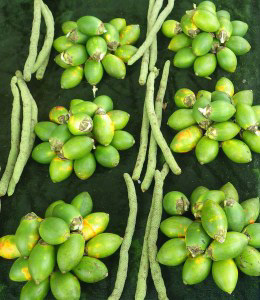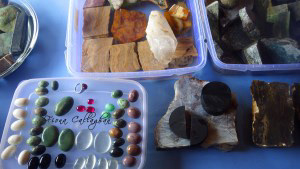Foy Moy! It means “Welcome!” in Sentani Language.
The Lake Sentani Festival interested me this time since there is only three famous festival in Papua which are Asmat Cultural Festival, Lake Sentani Festival and Baliem Valley Festival. These festivals are usually hunted by travellers such as tourist and photographers from all over the world. The Papua’s attraction immerge from their wonders of origin uniqueness. Usually all tribes from all villages participate in the festival giving their devotion for the sake of culture preservation and their willingness to share their local wisdom and culture for everyone. These unique attraction intrigue travellers to capture the cultural reality on what is really out there and share it to the world about Indonesians wonder and let themselves learn and open their view about it.
The Papuan’s pure eyes reflects from their innocent hearts projecting life about peace, natural beauty and friendships. These are the real powerful magnet that attracts people to come and feast their eyes with Papua’s wonders.
Lake Sentani
Located at the Jayapura Regency, Lake Sentani is surrounded by hills and mountains spans more than 9000 hectare making it one of the biggest lake in the Papua land. The enchantment relies on the lush green Cycloop’s Mountain range “also known as Dafonsoro Mountain in the local Sentani language” resides healthily at the north side of the lake as if hugging the lake with love, being the home of the rainbows, blue freshwater colour of the lake, fresh air and tranquillity. These magic’s make a peaceful home to live, acting as the true meaning from the name Sentani which means “Di sini kami tinggal dengan damai”- Here we live peacefully.
Other amazing facts that surprises me are islands that scattered within the lake. There are 21 of them! Can you imagine how big the lake is! There are 24 villages living around the lake, some at the small islands and others by the shore of the lake.
The Lake Sentani Festival 2015 has a theme of ‘My Culture, My Prosperity’. I love the theme because it meant proudness of showing one self’s culture and it also shows confidence that they can live prosperously through it without being afraid of any kind of outside interferences. An act that all Indonesians must do and also to preserve culture through learning and knowing each other’s cultures in Indonesia to prevent it from extinction especially at this modern era. To reach Lake Sentani it will take you around 20 minutes from Sentani Airport and around 30-40 minutes from Jayapura, capital city of Papua.
Papua's jewellery and accessories
I step my feet for the first time on Khalkote beach, East of Sentani district. It was the place that held the Lake Sentani Festival. There were lots of stands that you could find along the road and by the beach area that sells Papua’s special handicraft such as the Noken (Papua’s traditional string bag) which is made out traditionally of twined bark fiber and other colourful yarns that is easily found in the modern days; jewelleries made out from rattan and orchid fibers, beads such as coix seeds and shells, and colourful yarns; Betel nuts including the betel vine and lime – pinang as in local language; local gemstones from the Cycloops Mountain range; and local culinary such as papeda – made out from sago flour and matoa fruit.

Betel nut and vine

Papua's gemstones from cycloops mountain
There were many traditional dances that were participated by the Sentani people in various tribes such as the opening dance called Akokhoy dance by the Ayapo village; Yokari Demoykisi traditional dance from Tanah Merah, Jayapura Regency; traditional dances from the Elseng tribe, Kemtuk District, Benguing Progo Village, Jayapura Regency, the welcoming of happiness dance from the Sentani tribe in Asei Village, East of Sentani district; and the welcoming dance or war dance performed on a boat on the Lake Sentani called Isolo dance.
For the local handmade creativity, I went to see the making process of Siempe – a local Sentani language for pottery that are made from clay by the Velle tribe in Arbar Village, Ebungfauw District, Central Sentani. To access the place you can use a motorboat from Khalkote beach or from the small Yahim harbour that would take more or less 30 minute boat ride. I saw a young lady traditionally performed pottery manually with her hands that was made from the nearest Sentani’s red soil. There are 5 types of soil quality in Sentani. Pottery is done hereditary, usually made by the women but nowadays men also produce them. There has to be permit in taking the red soil for pottery or else they believe that the clay will break. The clay pots are usually made for the need of culinary and food. They usually sell it to the villages at Central Sentani.
Lake Sentani Handicraft
Other than Siempe, there are other local unique handicrafts by the Asei Besar Village at East Sentani district which is bark craft or bark painting. The bark comes from the Khoumbou tree and is believed that the process of making has to be during the full moon. The paintings on the bark crafts are unique motifs from the Sentani tribes.
When I was in Asei Besar Island, I met a friendly Dutch lady who actually made her own cendrawasih – bird of paradise gold necklace. I was impressed!
I am sure once you see Lake Sentani you will be transfixed by its beauty. The topography of lush green hills and mountain will hypnotize you. Besides the cultural Festival you should definitely explore the Sentani peaceful nature. For more information please click here http://www.indonesia.travel/.
Helem Foy! Thank you